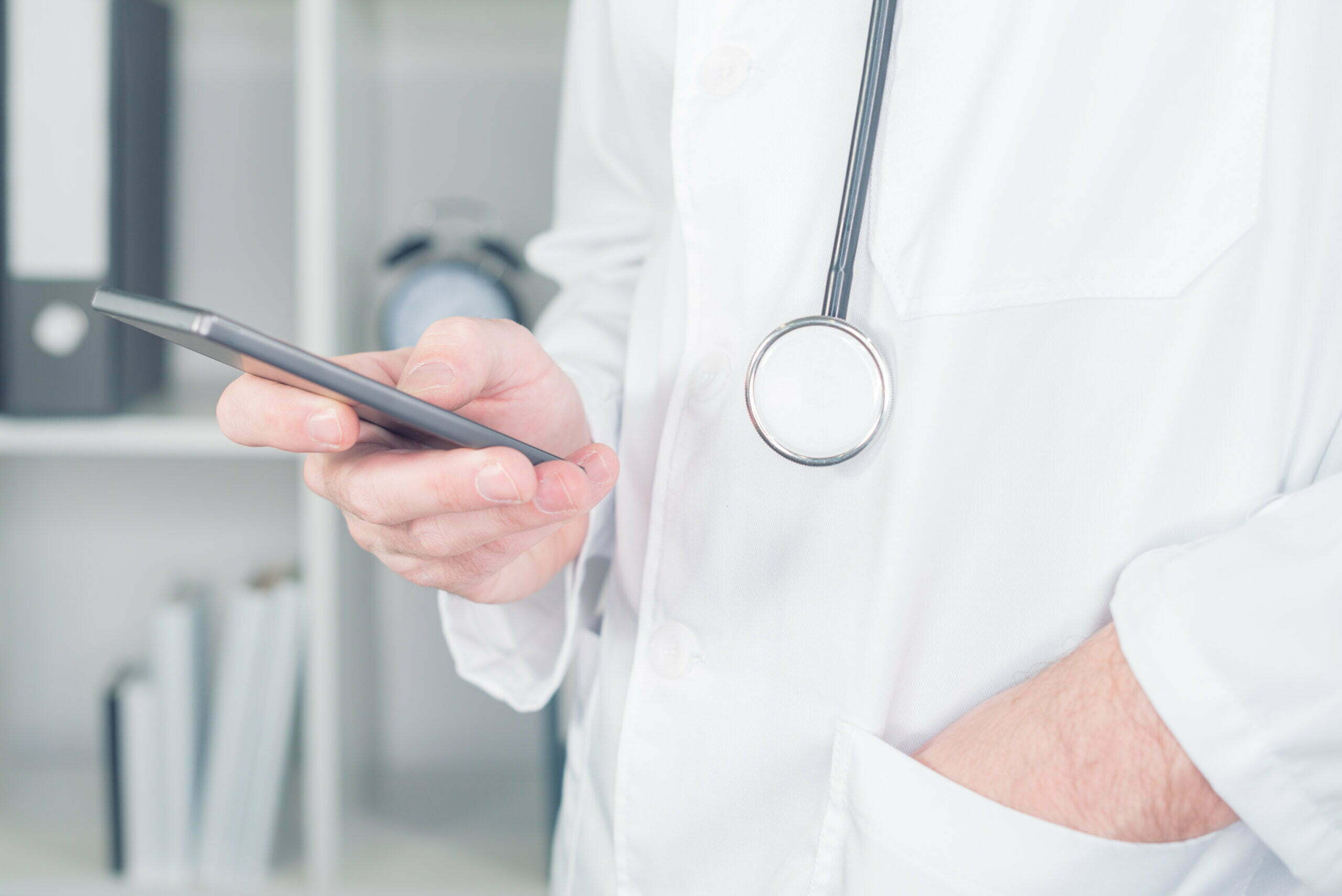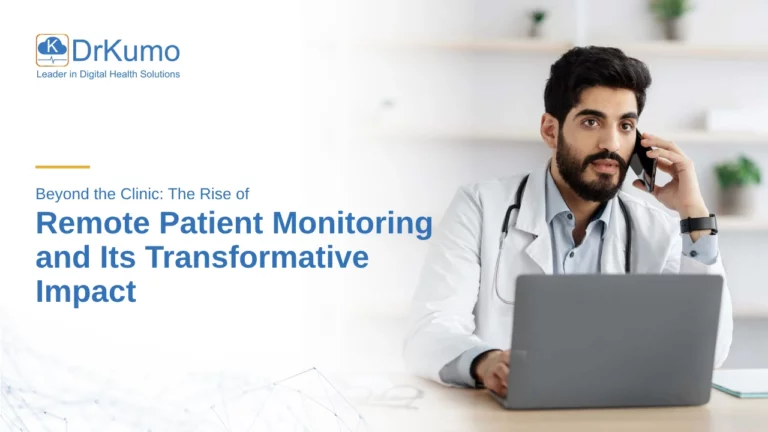The Covid-19 pandemic has taught the world how important the medical and healthcare sector is. This pandemic has paved an exponential rise in the use of telehealth and remote patient monitoring (RPM). With home quarantine and overwhelming restriction orders, in-person healthcare was made virtually through telehealth and RPM. In fact, the use of telehealth and RPM is projected to grow to over 4,000 percent in the coming years, according to S&P Global.
Among others, telehealth and its subset RPM are powered by the internet of things (IoT). The IoT is the network of digital devices that communicates over the internet. These digital devices are embedded with sensors, software, and other technologies to collect and transmit data from one device to another. The communication of these devices includes the sending and receiving of data and is done over the internet.
From its birth around 2008 to 2009 to this date, the IoT has benefited various industries such as the transportation, infrastructure and buildings, medical and healthcare industry. However, its greatest contribution is to the medical and healthcare industry.
In this article, we will focus on IoT in the medical and healthcare industry otherwise known as the internet of medical things (IoMT).
Internet of Medical Things (IoMT)
IoT as applied in the medical and healthcare industry, also known as IoMT, is the communication of medical and healthcare devices, such as wearables and stand-alone devices, software applications, and medical and healthcare systems and services over the internet. The “internet” in IoMT refers to the World Wide Web and the “medical things” refers to all physical objects used in the medical and healthcare sector that are capable of collecting patients’ data and the ability to communicate with other devices over the internet.
In just a short period of time, the IoMT had drastically transformed the medical and healthcare sector and is projected to balloon in the coming years. In fact, according to Allied Market Research, the IoMT’s market is expected to reach $332.672 billion by 2027.
The rapid growth of IoMT enabled healthcare providers to effectively manage their workflow while providing quality healthcare. With IoMT, quality healthcare is no longer limited to the walls of hospitals and in-person monitoring. It has extended its reach to patients outside medical facilities.
Using IoMT has shown benefits to both the healthcare providers and the patients. However, these benefits are always coupled with undeniable risks.
Benefits of IoMT
Here are some of the known benefits of IoMT.
1. Lower Healthcare Cost
Traditionally, patients are required to visit their physicians more often than not to keep track of their health and conditions and to adjust their treatment plan if needed. Also, patients who are chronically ill are required to stay more often and even longer in the hospital for continuous monitoring enabling doctors to have accurate diagnoses. With the regular visits, the long and frequent stay in hospitals, and not to mention the travel and medicine costs, the patients’ healthcare cost is very high.
However, with IoMT, the patient may be monitored remotely and continuously. IoMT devices, such as a smartwatch, pulse oximeter, and BP monitor, will collect the patient’s vital signs. Using the other technologies, the collected vital signs will be stored in a centralized repository and will also be transmitted to their doctor via the internet. The healthcare provider will then be able to change treatment or health maintenance plans when the patient’s healthcare data goes out of the normal without the need for in-person consultation or hospitalization. Hence, avoiding re-admission and cutting the cost of too-often check-ups, frequent and long hospitalizations, and even transportation.
2. Reduces Errors and Improves Outcomes
The accuracy of patients’ diagnoses is sometimes dependent on how regular and frequent their health data are collected. IoMT makes 24/7 health data collection possible. As such, the healthcare provider will be able to accurately diagnose the patient resulting in a correct treatment or health maintenance plan.
3. Portability of Devices
Devices that can be worn or carried by a single hand will bring great comfort and convenience to patients. Most IoMT devices are portable and easy-to-carry allowing patients to carry them around and using them anywhere. These devices include smartwatches, BP monitors, pulse oximeters, and weighing scales.
4. Better Patient Engagement
IoMT especially in RPM requires patients to be more involved in managing their health. Using sensor-enabled devices, patients’ health data will be collected. With their devices’ monitor or smartphone screen, patients may view their vital signs and initially evaluate if it is within normal range or not. If not, they can immediately inform their health providers and may take necessary steps to revert their health and conditions to normal. With IoMT, patients are encouraged to captain their healthcare journey leading to faster recovery and better health maintenance.
Risk: Healthcare Data Breach
One notable risk in using IoMT is data security. The HIPAA Journal published that there was a 40.63% increase in reported data breaches of 500 or more healthcare records in February 2021. Forty-Five data breaches were reported to the Department of Health and Human Services’ Office for Civil Rights by healthcare providers, health plans, and their business associates in February, the majority of which were hacking incidents.
Over the years, healthcare data had become the target of cybercriminals. As a result, the HIPAA has imposed stricter security guidelines mandating HIPAA-covered entities to implement appropriate administrative, physical, and technical safeguards to preserve the confidentiality, integrity, and availability of electronically protected health information.
Although strictly regulated, healthcare data are still the favorite of cybercriminals.
Common IoMT Devices
There are only two classifications of IoMT devices and these are the smart devices and the smart pill. However, the smart devices can further be classified based on portability, that is, wearable and stand-alone, and functionality, that is, for fitness or activity tracking, for RPM, for clinics and hospitals use, for personal emergency response systems (PERS), and clinical and medical-grade wearables. The following list will be based on the functionality of IoMT devices.
1. Fitness or Activity Tracking Devices
Fitness or activity tracking devices includes smartwatch, smart clothes, smart shoes, and smart jewelry. From counting steps and analyzing how much calories have been burned to the duration and quality of sleep, these devices are equipped with sensors that collect and transmit the fitness and activity data of the user. The collected data will be transmitted to the user’s mobile app for continuous monitoring.
2. Remote Patient Monitoring Devices
the RPM setting, clinical and medical-grade wearables and stand-alone medical devices are used. These IoMT devices such as a smartwatch, pulse oximeter, weighing scale, and BP monitor allows healthcare providers to continuously track their patients virtually and remotely- giving them the ability to immediately respond to their patients’ needs without the necessity of in-person consultation and hospital monitoring.
3. Clinical and Hospital Monitoring Devices
From digital stethoscopes to MRI to ECG machines, the clinical and hospital monitoring devices are IoMT devices used in the medical facilities. These devices are wirelessly connected to collect, transmit, and store patients’ data in a centralized repository. With a centralized repository system, the clinic and hospital operations are made easier and the medical records become more accessible.
IoMT in the hospital settings is not limited to tracking patients’ health and condition but also tracking hospitals’ assets. IoMT devices are also capable of locating other devices and determining their condition.
4. Personal emergency response systems (PERS)
These devices are specially designed for patients to easily call for help or alert their healthcare providers in case an emergency occurs. Most of these devices are given to seniors.
5. Clinical and Medical Grade Wearables
Clinical and medical-grade devices are given to patients with special needs, such as seniors and patients with chronic diseases. These IoMT devices are designed to improve the health and condition of patients. These devices underwent clinical trials and certifications from regulatory agencies making them reliably accurate.
These devices include smart belts, chest straps, smart sleep, and bio-patches. Most of these clinical and medical-grade devices collect data such as ECG, heart rate, temperature, repository rate, and others- giving doctors access to real-time health data of their patients.
6. Smart Pills
Recently, US FDA approved the use of smart pills. Smart pills are drugs with a micro sensor. This sensor will send data to another smart device informing that the patient has taken his medication including the time it was taken.
The smart pill is designed to monitor patients’ in-take of medicine especially those who can hardly keep up with taking their medicine on time or who completely forget about their medicines.
The Future of IoMT
The rise of IoMT is just beginning and will continue to grow in the coming years. IoMT as we know it may not only be monitoring patients residing on Earth. Who knows? It could someday monitor life outside this world. We can only hope that IoMT will always work to our benefit and advantage.
References:
- Burgess, M. (2018 February 16). What is the Internet of Things? WIRED explains. WIRED. https://www.wired.co.uk/article/internet-of-things-what-is-explained-iot
- Kelly, J., Campbell, K., Gong, E., Scuffham, P. (2020 May 12) The Internet of Things: Impact and Implications for Health Care Delivery. JMIR Publications. https://www.jmir.org/2020/11/e20135/
- What is the internet of Medical Things? Splurk. https://www.splunk.com/en_us/data-insider/what-is-the-internet-of-medical-things-iomt.html
- Jangir, M. (2020 May 25) IoMT Devices Will Revolutionize HealthTech in 2020. RT Insights. https://www.rtinsights.com/iomt-devices-will-revolutionize-healthtech-in-2020/








